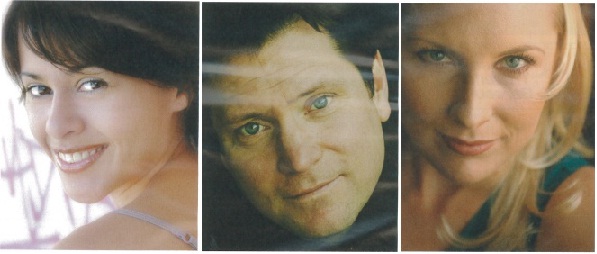by Laura Fumiko Keehn
“Japanese agencies employ all sizes, shapes, ages, ethnic backgrounds and personalities. No matter what your look, Japan might just roll out the red carpet for you.” says Carmen Overwater, a working model in Tokyo who has been in shoots for things as varied as Sesame Street and Biohazard (the movie), and for a major electronics maker.
The first step towards becoming a talent/model is to sign up to an agency. There are lots to choose from, and the whole process is relatively pain free. Of course a valid work visa is required, but not much else. Most agencies do not have a registration fee, and even if there is one, it is relatively minimal (think ¥1,000). The Gaijin Talents (GT’s) I spoke to recommended signing up to as many agencies as possible, because exclusive contracts are almost unheard of. “The beauty of this type of work in Japan is that you can sign up at several agencies at once” says Carmen. She also recommends creating a portfolio that includes a variety of images so that you will get considered for all types of jobs.
Another tip I received from Larisa, a Ukrainian vision who gets regular television work, was to have good pictures. Though most agencies take your picture during the registration process, the quality may vary. Another suggestion, given by Marika, who runs her own talent agency, Office Marika, is to tell the agencies about all your talents. You can juggle? You can sing? Walk on your hands? Dance? Mention it, you never know, what kind of work is available. “I did a job for a kids television show where I spent two years inside a character costume. It was exciting to be the character and to get to do some of the funny bits” says Ryan Drees, a GT who has been in everything including TV shows, commercials, print work, voice work, company promotion videos, movies, and many other projects.
On the down side, working as a GT can be a demeaning experience at times. In the US, moral conventions prevent television shows and individuals from exploiting negative stereotypes. However, Japan is still a country that generally believes Japanese equals 100 percent Japanese ethnicity. Characters such as Bobby Ologun, a native of Nigeria who is currently enjoying immense popularity, amuses the Japanese audience by playing up to the “stupid gaijin” stereotype. Many are shocked to know he is, in fact, incredibly educated and intelligent, as well as being an accomplished fighter. He won his first K-l match during the New Year against Cyril Abidi. Carmen notes, “the only roles I seem to ever get are as a ‘white, blonde bimbo.’ It would be nice if the advertisers would open their eyes to a wider definition of attractive, feminine women”.
On the upside again, modeling in Japan is an interesting way to earn extra, and at times, quite good money. The fact that all races, sizes and ages are eligible to do it means that you don’t have to be one of the rare, stick-thin beauties so necessary in other countries.
Also, the relatively easy chance to be on TV is an experience not to be missed and will be a good memory of your time in Japan. The variety of work available makes this type of work interesting, and as I’m sure many of you will agree, it sure beats the daily grind.
Office Marika
Japan Dance Art
207 Nobukawa Bldg. 14-6 Ichigaya-Daimachi
Shinjuku-ku, 162-0066, Tokyo
Tel. 03-3225-3091 Fax: 03-3225-3092
www.marikadance.com









